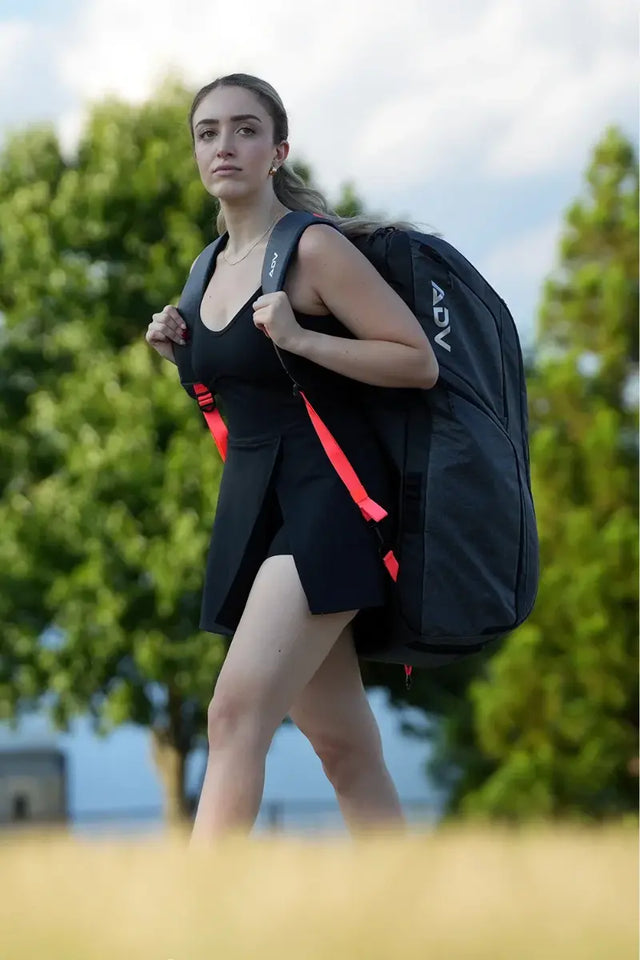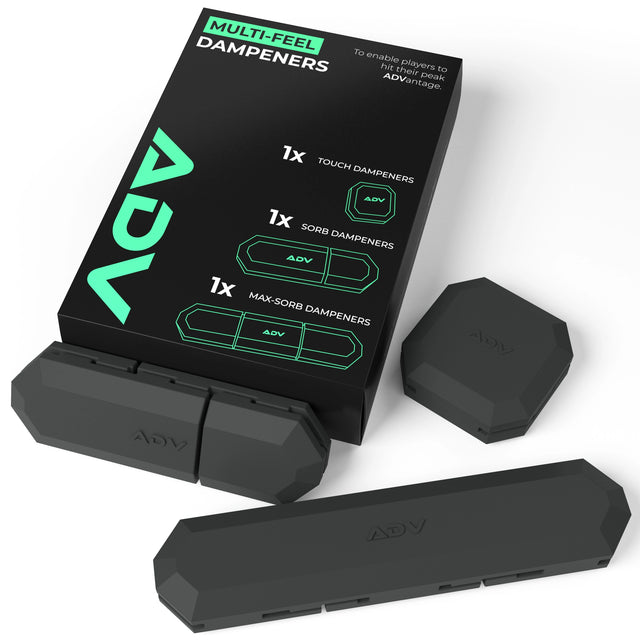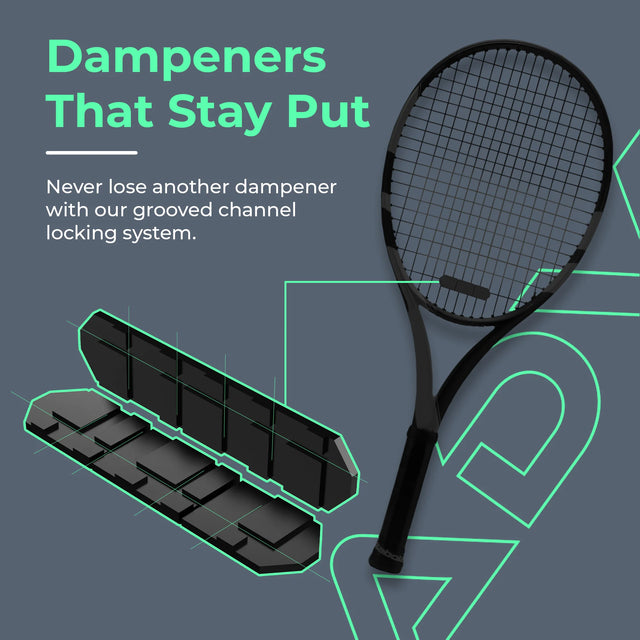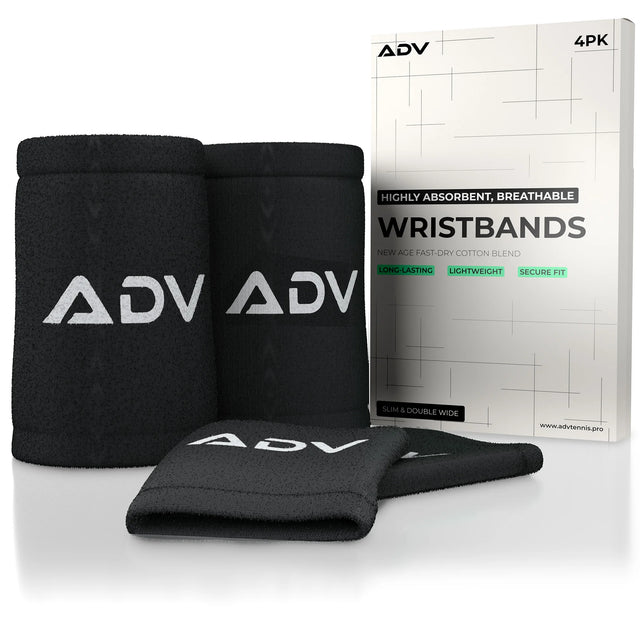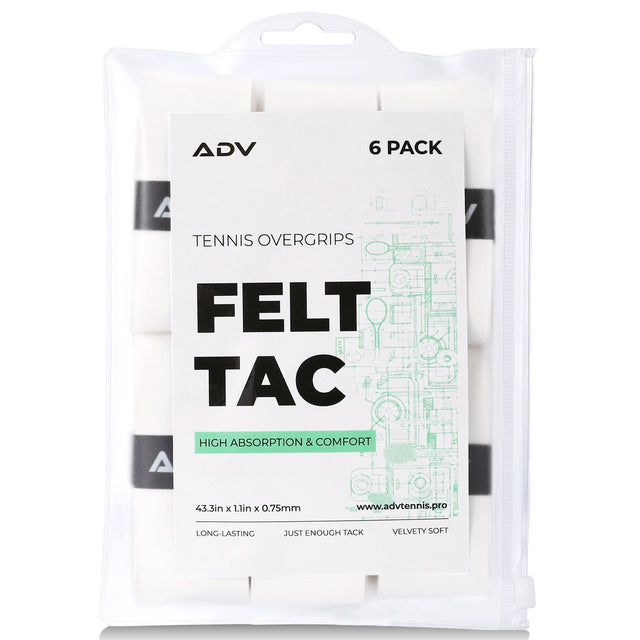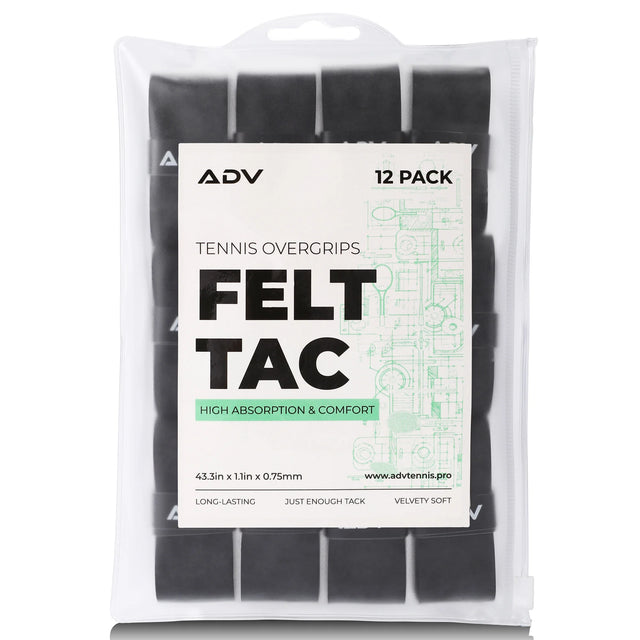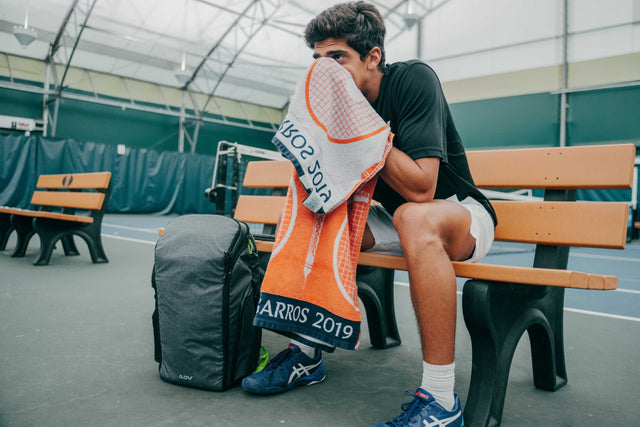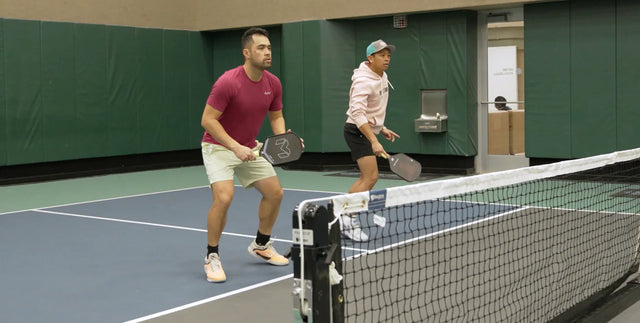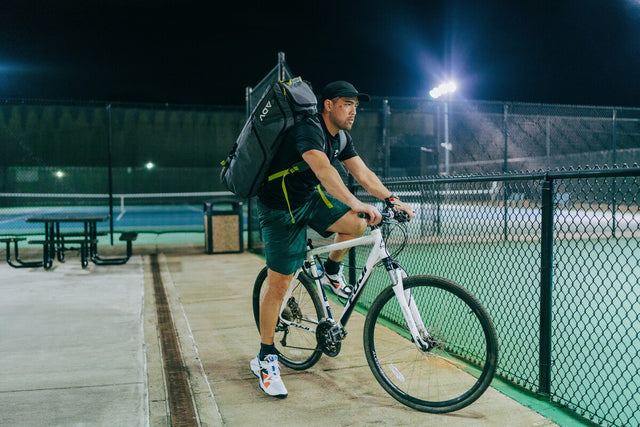What Every Player Needs In A Tournament-Ready Tennis Backpack
Preparation plays a huge role in how well you perform on the court. One of the most important yet often overlooked pieces of tennis tournament gear is a reliable backpack designed specifically for the sport. A well-designed one helps you carry everything you need for a full day of matches, practices, and warm-ups. Without proper storage for your rackets, clothes, and accessories, you may find yourself scrambling at the last minute to find your essentials. Investing in a bag made for tennis players ensures that your gear stays protected and accessible whenever you need it most.
Core Design Features of a Tournament-Ready Tennis Backpack
Dedicated Racket Compartments
A proper racket backpack always includes special compartments designed specifically to hold your tennis rackets securely. These sections are shaped to fit rackets without bending or damaging the frames. Many of the best options also come with thermal insulation, which helps maintain string tension by protecting your rackets from extreme heat or cold. This feature is particularly beneficial during outdoor tournaments, where weather conditions can vary significantly throughout the day. Keeping your rackets in a separate, padded space ensures they remain in top condition.
Reinforced Main Storage
One of the standout tennis backpack features is a strong main compartment where players can store their clothing, extra shirts, and towels. To support the weight and prevent objects from being crushed by other equipment, these compartments often feature reinforced panels. Comfort and preparedness between games are significantly improved by having easy access to dry, clean clothing. This area should be spacious enough to fit multiple outfits without feeling cramped.
Separate Shoe Compartments
This feature helps keep dirty footwear away from clean clothes and rackets, which is essential for hygiene. Shoes often pick up dust, sweat, and debris from the court, and placing them in your pocket prevents these elements from spreading throughout your bag. Some compartments also have ventilation, which reduces odor buildup and allows damp shoes to air out between matches.

Easy-Access Side Pockets
Having quick access to hydration and fuel is essential during tournaments, and a quality tennis bag with compartments typically includes side pockets specifically designed for this purpose. These pockets are generally sized to hold water bottles, sports drinks, or protein snacks, making them easy to grab when you’re on the go. Tournament days can be long and demanding, and staying hydrated keeps your energy levels up. Convenient side storage also prevents spills inside the main compartment, keeping other items dry and protected.
Ergonomic Comfort and Carrying Efficiency
Padded Shoulder Straps
Comfort becomes a top priority when carrying your sports gear backpack across long tournament days. Quality backpacks for tennis are equipped with thick, padded shoulder straps that help reduce pressure on your shoulders. These straps distribute weight more evenly, making it easier to carry your bag without discomfort. In addition to padded straps, ventilated back panels allow airflow to keep your back cool and dry while walking between matches or courts. The breathable design helps prevent sweat buildup, which can be uncomfortable and distracting.
Adjustable Sternum and Waist Straps
An excellent backpack for tennis players often includes adjustable sternum and waist straps that help improve balance while carrying gear. These straps work together to secure the bag close to your body, preventing it from shifting as you walk or move quickly. By stabilizing the load, these adjustable features reduce strain on your shoulders and back. They also make it easier to maintain good posture while wearing the backpack for extended periods.
Weight Distribution Systems
Effective weight distribution plays an important role in the design of any tennis racket bag intended for tournament use. These backpacks often feature internal frames or support structures that help distribute the weight of your gear evenly across the bag. By spreading the load evenly, these systems reduce the chances of shoulder fatigue or muscle soreness during a long day of play. Well-designed bags focus on ensuring that heavy items are evenly distributed, which helps keep your back aligned and reduces strain. Another helpful feature of a durable tennis backpack is a stable base that allows the bag to stand upright without tipping over. This design detail ensures that your backpack remains in place when set down next to the court, providing quick and easy access to your items during match breaks. Many models use structured bottoms with reinforced materials to create this stability.
Practical Storage Solutions for Tournament Essentials
Integrated Pouches
Tennis matches can be unpredictable, and equipment adjustments are often necessary between games. That’s why a top-rated tennis bag should include integrated pouches designed to hold smaller items like grips, dampeners, and overgrips. These pouches help keep your accessories neat and prevent them from getting lost at the bottom of your bag. When these items are stored correctly, it becomes much faster to replace a grip or attach a dampener without having to dig through unrelated gear.
Secure Zip Compartments
Any tennis storage solution should include a secure area for personal belongings. Secure zip compartments are specifically designed to hold valuables like keys, wallets, and ID cards. These sections are typically located inside the backpack, offering added protection against theft or accidental loss. Tournament environments can be busy and distracting, making it easy to misplace small personal items if they’re not adequately secured.
Mesh Pockets
Quick-dry gear, such as sweatbands, wristbands, and headbands, is an essential tool for keeping cool and comfortable during intense matches. Mesh construction helps prevent odors and mildew by providing ventilation, which is especially important when dealing with damp fabrics. These pockets also make it easier to grab accessories on the fly, saving time between sets.

Hidden Water-Resistant Pockets
One of the smartest features found in a custom tennis backpack is the addition of hidden, water-resistant pockets, specifically designed to protect delicate items such as electronics and documents. Below are the key benefits:
- Moisture Protection: Hidden water‑resistant pockets are engineered with technical fabrics—often laminated or coated with PU or TPU membranes—that form an impervious barrier against liquid intrusion. Positioned behind external panels or beneath flaps, these pockets block out rain, sweat, and accidental spills from water bottles or sports drinks. The seams are typically sealed or welded rather than stitched, eliminating needle holes that can become seepage points. Inside, a secondary waterproof lining adds redundancy, ensuring that even if the outer layer becomes saturated, your valuables stay bone‑dry.
- Discreet Storage: In high‑traffic tournament environments, keeping valuables out of sight is a key theft‑prevention strategy. Hidden pockets are usually accessed via concealed entries, such as camouflaged zippers along the bag’s back panel or side seams, making it difficult for pickpockets to locate them without your knowledge. This discrete placement affords an added security layer beyond locking zippers or integrated cable locks. Because these compartments are typically flush with the bag’s structure and lack visible hardware, they don’t draw attention like external zippered pouches. You can stash passports, credit cards, or portable chargers behind your back, literally placing them against your spine, which creates a physical barrier between the pocket and any would‑be opportunist. Some designs also include radio‑frequency identification (RFID) blocking liners within these hidden pockets, preventing unauthorized scanning of contactless cards or electronic passports. The combination of stealthy placement and advanced materials ensures that critical items remain both physically and digitally protected.
- Easy Organization: Strategically locating waterproof compartments enhances efficiency when you need quick access to essential items. Designers often integrate these pockets in areas that are intuitive to reach—behind the shoulder straps, inside the top flap, or in a middle layer—so you can retrieve documents or devices without displacing other gear. By allocating a dedicated space for electronics and paperwork, you avoid rummaging through damp towels, used grips, or stray tennis balls. Many models feature internal mesh dividers or elastic loops within the water‑resistant pocket to hold items upright and prevent them from shifting during transit. This means your smartphone stays in one spot, and your passport doesn’t flop around and potentially crease. Visual cues, such as contrasting fabric colors or discreet pull-tabs, help you locate the pocket by touch alone, a boon in dimly lit locker rooms or under stadium seating. Some tennis court bags include a quick‑release latch or magnetic closure on these pockets, enabling one‑handed operation so you can keep your other hand free for drinks, racquets, or hydration packs.
- Device Safety: Soft, closed‑cell foam or microfleece layers cushion delicate screens, shielding them from impacts and scratches when the bag is jolted or set down heavily. The pocket’s interior surfaces are often treated with silicone‑based coatings to reduce friction, so sliding a tablet or e‑reader in and out doesn’t wear down screen protectors over time. Some designs include raised ridges or embossed patterns that cradle devices, preventing them from lying flat against hard items like racquet frames or metal clasps. This gap acts as a buffer zone, dissipating shocks and reducing direct pressure on the corners, which are common points of failure. For paperwork, the reinforced pocket walls maintain a stable shape, averting crumpled edges or creased pages that can make scanned tickets unreadable at venue checkpoints.
- Multi-Purpose Use: Travel-oriented players find them ideal for stashing passports, boarding passes, or vaccination records during international travel. Coaches and tournament directors can store lineup sheets, while scorekeepers can keep coins or pencils. Sports therapists might carry small vials of medication or bandages. Because the compartments are moisture‑proof, they also make excellent repositories for earbuds, portable battery packs, or cables that you don’t want to tangle with sweaty apparel. Some designs incorporate pen holders or slim card slots within the waterproof pocket, enabling you to keep scorecards and writing instruments together.
These features not only prolong the lifespan of fragile items but also simplify match‑day routines, offering both elite players and recreational enthusiasts a practical edge in gear management.
Durable Construction and Material Innovation
Heavy-Duty Zippers and Reinforced Stitching
Longevity is a crucial quality in any tennis racket cover, particularly when it comes to daily use during tournaments and practices. One of the most critical areas where durability matters is in the zippers and stitching. These zippers are made to withstand repeated opening and closing, ensuring reliable performance over time.
Lightweight Materials
Careful material selection lies at the heart of crafting a tennis backpack that feels almost weightless. Here are the critical advantages of using lightweight materials in tournament‑ready gear backpacks:
- Improved Mobility: This close fit prevents the bag from swaying or bouncing during quick sprints or sudden direction changes, reducing the risk of losing balance or pulling against the shoulders. As the bag becomes an unobtrusive extension of your kit, you can transition more smoothly from warm‑up drills to match play, carrying your equipment in a way that feels almost second nature. Lightweight materials also enhance aerodynamic efficiency by minimizing drag when you pivot or accelerate, ensuring that every movement is as efficient as possible.
- Energy Conservation: The cumulative energy cost of each step diminishes, conserving precious stamina over a multi‑match day. Lightweight fabrics minimize the strain on the trapezius, deltoids, and lower back muscles, preventing premature fatigue that can compromise reaction times or decision‑making under pressure. Additionally, by easing the force on joints and ligaments, lightweight backpacks help mitigate micro‑trauma caused by repetitive load‑bearing, an essential consideration for players competing in back‑to‑back fixtures. With less effort devoted to carrying equipment, players can allocate more energy towards dynamic warm‑ups, tactical adjustments, and mental focus. Moreover, energy conserved through optimized top-rated tennis bags' weight can aid in faster post-match recovery, as muscles and connective tissues endure less cumulative microdamage, which facilitates quicker replenishment of glycogen stores and reduces delayed onset muscle soreness.
- Enhanced Durability: Innovations such as high-tenacity nylon with ripstop reinforcement, micro-denier polyester laminates, and Dyneema-infused weaves provide tear and abrasion resistance comparable to much heavier materials. These textiles utilize proprietary coatings, such as polyurethane (PU) or silicone finishes, that provide structural stability while also offering water repellency and UV protection. Seams are often reinforced with bar tacking and high‑strength bonded tapes instead of traditional bulky seam allowances, ensuring that critical stress points withstand the repeated strain of heavy contents, zipper pulls, and shoulder strap attachments.
Players who prioritize lightweight designs enjoy the freedom of movement and ease of transport, allowing them to stay focused and energized throughout the tournament.

When you set out to buy tennis backpacks, it’s important to choose one that matches your unique playing style and needs. Consider how much gear you typically carry, how often you travel for matches, and whether you prefer lightweight options or additional features like rain covers and hidden pockets. The ideal backpack should feel like an extension of your preparation, giving you confidence that your tennis essentials are secure and always within reach.

